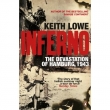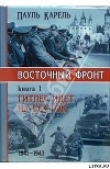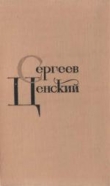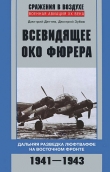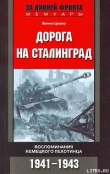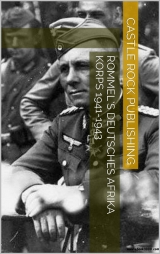
Текст книги "Rommel's Deutsches Afrika Korps 1941-1943"
Автор книги: Автор Неизвестен
Жанры:
История
,сообщить о нарушении
Текущая страница: 18 (всего у книги 19 страниц)

After the war, an edited version of his diary was published as The Rommel Papers. He is the only member of the Third Reich establishment to have a museum dedicated to him. His grave can be found in Herrlingen, a short distance west of Ulm.
The official story of Rommel's death, as initially reported to the general public, stated that Rommel had either suffered a heart attack or succumbed to his injuries from the earlier strafing of his staff car. To further strengthen the story, Hitler ordered an official day of mourning in commemoration and Rommel was buried with full military honours. Hitler sent Field Marshal von Rundstedt as his representative at Rommel's funeral. Rommel had specified that no political paraphernalia were to be displayed on his corpse, but the Nazis made sure he was fully festooned with swastikas. The truth behind Rommel's death didn't come out until Fieldmarshal Keitel testified about it during the Nuremberg Trials.
 Erwin Rommel as Tactician
Erwin Rommel as Tactician
Rommel has been hailed as a brilliant tactician and competent strategist but certainly not without flaws. Contemporaries who had to work with him under adversity often had very few kind words to say about him and his abilities. Following Paulus' return from his inspection of Rommel's doings in North Africa and also considering the reports submitted by Alfred Gause, Halder concluded: "Rommel's character defects make him very hard to get along with but no one cares to come out in open opposition because of his brutality and the backing he has at top level." Others mentioned his leadership style, which expected much of his commanders, while not being open to criticism or objections. He had little patience for sub-commanders who did not do their jobs properly. Only three weeks after assuming command of the 7th Panzer Division in February 1940, Rommel found a battalion commander performing below par and had the man relieved of command and sent on his way in 90 minutes. This management style would certainly send a signal that he demanded the utmost of his men, but it was bound to create a feeling of resentment among some of his officers.
F. W. von Mellenthin, who served on Rommel's staff during the Africa campaign, wrote that Rommel took great chances on several occasions, gambling entire battles on decisions made almost on the spur of the moment and with incomplete information. He cited Rommel's counterattack during Operation Crusader as just one such instance. Others who served under him in Africa, most notably General Fritz Bayerlein, said he took risks but only after carefully weighing the potential dangers and rewards.Rommel himself was aware of his growing reputation as a gambler and added careful notes in his papers explaining and defending his actions, especially concerning his decision to drive into Egypt during the 1942 Summer Offensive. [31]
While some aggressive subordinates, like Hans von Luck, praised his leadership from the front, Mellenthin questioned this leadership style as it often led to disinvolvement of his staff officers in the fight instead of their maintaining an overview of the situation. His consequential long absences from HQ also meant that subordinates had to make decisions without consulting Rommel, leading to confusion.
In France, Rommel's aggressive drive through the French and British lines, disregarding the safety of his flanks and rear, succeeded to a remarkable degree. His bold attacks often caused larger enemy formations to surrender but his aggressiveness did cause resentment among fellow officers, however, who felt he at times acted too recklessly and failed to keep his sub-commanders and colleague commanders properly informed of his intentions. He was also criticized for claiming too much of the glory himself, neglecting support from other elements of the Wehrmacht and downplaying other units' achievements.
Rommel won many battles in Africa in 1941 and 1942 against British forces that always outnumbered him and generally had better supply lines, through aggressive action. On several occasions he violated direct orders not to attack. But his eagerness to drive for Egypt, when the necessary logistical support was lacking, meant that these drives ultimately failed with great losses. Rommel perceived "unique opportunities" in capturing Egypt and perhaps the Middle East. This result would definitely have had a huge impact on the course of the war, but his grand vision was never supported by Hitler nor the General Staff in Berlin to the extent that Rommel desired.
Rommel himself only belatedly acknowledged that his continual supply problems were not the result of intransigence or slacking by the Italians, who handled the transshipment of his supplies, but were a result of his aggressive actions in overextending his lines of communication. In his analysis of the logistical aspects of the North African Campaign, military historian Martin van Creveld wrote:
Given that the Wehrmacht was only partly motorized and unsupported by a really strong motor industry; that the political situation necessitated the carrying of much useless Italian ballast; that the capacity of the Libyan ports was so small, the distances to be mastered so vast; it seems clear that, for all of Rommel's tactical brilliance, the problem of supplying an Axis force for an advance into the Middle East was insoluble. ... Rommel's repeated defiance of his orders and attempts to advance beyond a reasonable distance from his bases, however, was mistaken and should never have been tolerated.
British General Harold Alexander commanded Allied forces in the Middle East facing Rommel in Egypt (from August 1942) and later commanded 18th Army Group in Tunisia. In his official despatch on the campaign in Africa, he wrote of Rommel :
He was a tactician of the greatest ability, with a firm grasp of every detail of the employment of armour in action, and very quick to seize the fleeting opportunity and the critical turning point of a mobile battle. I felt certain doubts, however, about his strategic ability, in particular as to whether he fully understood the importance of a sound administrative plan. Happiest while controlling a mobile force directly under his own eyes he was liable to overexploit immediate success without sufficient thought for the future.
Sir David Hunt, one of Alexander's intelligence officers, expressed the view in his own book that:
...his real gift was for commanding an armoured regiment, perhaps a division, and that his absolute ceiling was an armoured corps.
During the siege of Tobruk, Rommel launched frequent costly attacks during the first month of the siege. The level of losses incurred caused Rommel to have several arguments with his unit commanders, and also with the German High Command. Indeed, some sources indicate that Chief of Staff Halder had to send Friedrich Paulus to Africa to rein Rommel in, although Rommel himself maintained he had realized the futility of further attacks on the fortress on his own accord.
Popular perception
Rommel was extraordinarily well known in his lifetime, not only by the German people, but also by his adversaries. Popular stories of his chivalry and tactical prowess earned him the respect of many opponents, including Claude Auchinleck, Winston Churchill, George S. Patton, and Bernard Montgomery. Rommel, for his part, was both complimentary and respectful of his foes. Hitler counted Rommel among his favourite generals. Rommel was among the few Axis commanders (others being Isoroku Yamamoto and Reinhard Heydrich) directly targeted for assassination by Allied planners. However, unlike the other two, the attempt on Rommel's life was a failure.
The Afrika Korps were never accused of any war crimes, and Rommel himself referred to the fighting in North Africa as Krieg ohne Hass—war without hate. Numerous examples exist of Rommel's chivalry towards Allied POWs, such as his defiance of Hitler's infamous Commando Order following the capture of Lt. Roy Woodridge and Lt. George Lane as part of Operation Fortitude. He also refused to comply with Hitler's order to execute Jewish POWs.
During Rommel's time in France, Hitler ordered him to deport the country's Jewish population; Rommel disobeyed. Several times he wrote letters protesting against the treatment of the Jews. When British Major Geoffrey Keyes was killed during a failed commando raid to kill or capture Rommel behind German lines, Rommel ordered him buried with full military honours. Also, during the construction of the Atlantic Wall, Rommel directed that French workers were not to be used as slaves, but were to be paid for their labour.
His military colleagues also played their part in perpetuating his legend. His former subordinate Kircheim, though privately critical of Rommel's performance, nonetheless explained: "thanks to propaganda, first by Goebbels, then by Montgomery, and finally, after he was poisoned (sic), by all former enemy powers, he has become a symbol of the best military traditions. ...Any public criticism of this legendary personality would damage the esteem in which the German soldier is held».
After the war, when Rommel's alleged involvement in the plot to kill Hitler became known, his stature was enhanced greatly among the former Allied nations. Rommel was often cited in Western sources as a general who, though a loyal German, was willing to stand up to Hitler. The release of the film The Desert Fox: The Story of Rommel (1951) helped to further enhance his reputation as one of the most widely known and well-regarded leaders in the German Army. In 1970 a Lütjens-class destroyer was named the FGS Rommel in his honour.
Annexes Panzer Tactics
A everyone knows, theory and practice do not ilways coincide. That is exactly how it was with the German philosophy of the employment of armored formations in World War H. Although Germany was well ahead of all other armies in the fundamentals of commitment and in the art of operational command from the mid-thirties, within the Wehrmacht there were abundant violations of those fundamentals when it came to putting them into practice on the operational and tactical levels. Thus a study of German armored operations cannot have the goal of documenting the many violations of principle. Instead, I intend to make clear how the German fundamentals of employing armor formations differ from those of other nations even to the present day. Those tactically effective doctrines were one of the ultimate reasons for the success of German troops on a local level until the final weeks of the war.
The technical literature includes countless competent presentations at the level of operational/ strategic command (army and higher). That also holds true at the tactical/operational level of army corps and division. Totally underrepresented are factually correct descriptions of the level of command that bears the actual burden and rigor of the battle, that of the regiment—generally, the brigade in modern usage—'and the battalion. With appropriate reinforcements for combat and employment, they generally form the heart of the operation in that they become the battle groups (Kampfgruppen) or combat formations, frequently approaching divisional strength.
The reasons for the gaps in the literature are manifold. The interested reader usually wants an overview of a battle or a military theater without getting lost in the details of individual fighting. Also, most of the war literature inevitably comes from generals, some of whom have no knowledge at all regarding situations so far under them.
An additional aspect is that operational command in action at lower levels is, in part, more difficult than that of the larger formations, which an intelligent general staff officer can learn in a few years of ongoing training, regardless of what branch of service he belongs to. Command skills at the lower tactical level do not come from theoretical studies or sheer talent. One has to work long years at all levels to gain that experience. It was no accident that, by the end of the war, officers ranging from the level of divisional command to that of commanding general of an army corps were predominately men who had started the war as small-unit commanders and risen through command of small formations to command of large organizations. In the process, reserve officers were in the majority.
By using the classical weapon employed at the point of main effort (Schwerpunktwaffe)—the armor formation—I will familiarize the reader with the different types of operational roles and other missions that exist during operations.
Right at the beginning, an essential fundamental principle must be taken to heart: tanks achieve their success primarily and predominately through offensive action. That is true whether the tactical/ operational situation is offensive or defensive. As a commander of armies von Manstein masterfully demonstrated how German armor formations could achieve remarkable successes when they were committed in (counter-) attacks, even within the context of overall retreat.
The tank, therefore, must constantly remain the sword in the hand of the tactical commander. He must use it offensively against the enemy, even in hopeless situations. If he forgoes this advantage by committing tanks to stationary positions or, even worse, digs them in and allows them to degenerate into a direct-support weapon for the infantry, then he is like a knight of old who has been reduced to the dubious protection of his shield. The initiative an armor leader instinctively seeks then passes over to the enemy.
Misunderstandings regarding the combat value of tanks continually arose when they were assigned roles beyond their capabilities or which they could only perform in quite limited fashion. These misunderstandings arose when the tank was considered as the sole ruler of the battlefield. Such high-flown expectations in turn assume that the tank can withstand any threat, even though an abundance of such threats may be directed against it. In addition to direct-fire weapons of all calibers, there are indirect fire systems, mines, obstacles, close-quarters combat systems with hollow-charge or simple incendiary devices and an increasing number of missiles that can be used at minimal distances from cover by
individual riflemen. There is always great disillusionment when the tank formation, stressed beyond its capabilities, suffers hair-raising losses. It is hardly surprising to hear in many circles that the tank has become obsolete as an effective combat weapon.
Such conclusions fail to recognize that it is always necessary to employ the best weapon for the intended objective at the correct time and commit it in terrain that does not grant the enemy an advantage before the operation even begins. The troop leader must continuously attend to the prerequisites for the operation, not only through choice of terrain and correct timing, but also through proper force ratios and effective combat support, particularly from the air.
The main battle tank (Kampfpanzer) is limited by technical requirements and does not have unlimited capabilities (protection against all possible threats). It requires a precise balance between a practical level of protection, on the one hand, and, in the final analysis, the far more important capability to function against the enemy. That combination is the ability to dominate the battlefield. It comes from the sum of the tank's capabilities and not from over-emphasis on a single characteristic. Only when firepower, mobility, protection and command and control capability are combined in a balanced whole can a tank function effectively as a system and be more effective than a system which was not conceived according to these principles. Other aspects also contribute to effectiveness, such as good training of the crew, a high level of technical reliability, a large logistical operating range etc.
It is, in the final analysis, futile to argue whether the Tiger or some other tank was the best armored fighting vehicle of the Second World War. The mass-produced M4 Sherman stood no chance in a direct engagement with a Tiger. Nevertheless, it was a successful model because it was technically reliable and was provided to the troops in inexhaustible numbers. The Soviet T-34 was rugged and did not require a high-technology industrial base for its mass production.
What advantage did the Tiger provide the Wehrmacht if the enemy manufactured 20 tanks to every Tiger that left the factory? It was "acceptable" for an American crew to "consume" half a dozen or more Shermans between landing in France and arriving at Germany's borders.
A successful main battle tank thus depends on a series of factors. It was quite clear that the chances for survival for a tank crew in a Panzerkampfwagen IV were significantly lower than in a Tiger. It would not have been advantageous to the Wehrmacht if, instead of a Tiger, three or four Panzerkampfwagen IV's had been manufactured. Even the best weapons system must finally bow to quantitative threats. Although produced at considerably more cost, the Panther and Tiger contributed to delaying the unavoidable end of the war. The comments made in the following book are based on two things. First, the content of the regulations will be explained. The regulations, however, contain only the bare essentials and include only general statements about the practice—about the "how" of armored operations.
By far the greatest portion of the text consists of the knowledge gained that was directly derived from actual experience in opera-
tions. That knowledge was collected through hours of discussion with former Panzer soldiers of all ranks, evaluation of combat reports and accounts of personal experiences along with, of course, the personal experience of the author as an armor officer and leader/commander in numerous combat exercises ranging from platoon leadership through command of tank and antitank (Panzerjager) companies and, finally, an armor battalion.
In the formation of the post-war German army—the Bundeswehr—the majority of the principles of leadership and employment as practiced in the Wehrmacht were adopted wholesale. That was particularly the case with most of the officers in the 1950's, and even in the 1960's, many of whom had previously served in the Wehrmacht.
Development of German Armor Tactics
Given the great success of German armor formations in World War II, it is surprising that the formation of armor units and the doctrine for their employment did not proceed in a directly linear and purposeful manner. Just as in other countries, the majority of officers did not recognize the promising possibilities of motorization. In spite of isolated significant successes with tanks, they were viewed primarily as support weapons for infantry in France and Great Britain. Only hesitantly were other directions tried (British experimental exercises in 1934 on Salisbury Plain and the formation of two armored divisions in France).
In Germany, too, the theoreticians who thought progressively ran up against the massive opposition of traditionalists. Forced to make up with quality for lack of quantity, a more intensive start was already being made with the formation of so-called mobile troops (schnelle Truppen) as early as the formation of the Reichswehr. These mobile troops built on the experience of the cavalry. The first step was the use of motor vehicles for reconnaissance and transport functions rather than weapons carriers. This might seem strange, considering the unhappy German experience with Allied tanks on the Western Front in the First World War. However, many had a false picture of the capabilities of tanks. They were seen as ponderous, mechanically unreliable systems with an extremely limited radius of action that were all too easy to stop when committed against a massed defensive system. Such an evaluation was indeed limited and naive, but it was predominant at the beginning of the Second World War and favored the initial success of the Germans. [32]

Although he was progressive in his thinking about many things, the Chief of the General Staff, General Beck, opposed the formation of a so-called motorized combat troop (Kraftfahrkampftruppe). Most theoreticians traced their thinking back to the experience of the First World War. Based on the decrease in significance of cavalry, it was felt that airplanes and tanks could not in any way carry lead to the reintroduction of mobile operational principles. In turning away from the basic principle of "movement," the conduct of operations focused exclusively on the factor of "fire" (effect).
It is significant diat as early as 1921 the Chief of the Army High Command (Chef der Heeresleitung), General von Seeckt, stated in a memorandum, "Fundamental Considerations for the Rebuilding of Our Armed Forces" (Grundlegende Gedanken fur den Wiederaufbau unserer Wehrmacht): ". . . that less than ever does the salvation of the weaker lie in rigid defenses, but rather in mobile attack." Paradoxically, in a land that had been thoroughly demilitarized by the victors and was scarcely capable of defending itself, the principles of free-reigning operations and the offensive employment of armor was increasingly being recognized. With this thought, possibilities increased for a numerically inferior but better equipped and mobile operating force. The dreams of the infantryman, who had been pulverized by artillery in crushing positional warfare during the First War, also played a subliminal roll. It was important to seize the opportunity to penetrate the static elements of the operational thinking of the time!
The manifold opposition and hindrances to the formation of such troops were finally overcome in the mid-thirties, when Reichskanzler Hitler personally took an obvious interest in thematter. He, himself, was marked by the trauma of positional warfare and was promulgating expansionist ideas. It was especially obvious to him that the armored branch of the service (Panzerwaffe) had the potential to offer an especially effective instrument with which one could wager the step across the borders.
That also tipped the balance toward the establishment of armor formations with particular characteristics. In contrast to the armored battalions of other nations, the new armor battalions (Panzer-abteilungen) were seen from the start as capable of carrying out independent operations, rather than just as support for the infantry. Among other things, the essential step in the right direction came in 1935 from a great demonstration and experimental exercise in North Germany near Munster, that was, at times, attended by Hitler in person. The formation of the new Panzerwaffe matched Hitler's political interests. Laughably, a number of generals later attributed their opposition to the mechanization of the army to having recognized this at that time! It was important then for the few creators of the German Panzertruppe to set about forming an effective army with the few resources available and making Germany capable of defending itself.
Certainly it cannot be their fault that false operational ideas were taken up in the neighboring countries! (France increasingly became the exception. It had effective tanks and, by the end of the 1930's, had started organizing armored divisions on the German pattern.)
The First Three Panzerdivisionen
In spite of opposition from most quarters, the Kom-mando der Kraftfahrkampftruppen was given the assignment of organizing three large armored formations (PanzergroBverbande). This started in 1935 and was, to a certain extent, a large-scale experiment. The 2– Panzerdivision, then in Wurzburg, was turned over to (at that time) Oberst Guderian, one of the most ardent proponents of an operational Panzerwaffe. Many had the thought that, in this way, he himself would have to see the senselessness of such measures.
The path to these organizational measures had already been laid over the course of years of secret activity in the Reichswehr, part of which took place in the late 1920's in the Soviet Union (at the KAMA facility). On 1 November 1933 a training unit was formed at Zossen with the cover-name of "Kraftfahrlehrkommando" (motor vehicle training command). Within a few months, additional company-sized formations were activated. Soon they were consolidated into battalions and regiments. In the rapid expansion after 1935, the accumulated experience paid off. The new German Panzertruppe could grow from within itself. It was imperative to avoid forming new units from untrained command personnel, as was done in other countries. In Germany that principle is called "Kalben" (calving).
The decision to form separate armor formations was not in itself a guarantee of future success. (Many countries had armor formations, after all.) In this connection it is important to note that from the beginning in Germany these formations were capable of operations as combined arms teams. They did not need the external attachment of other formations to do that. Among them were integral motorized riflemen (Schutzen) who were initially only transported on trucks. They soon developed into mechanized infantry (Panzerschutzen) and, in 1942, were given a special branch of service designation (Waffengattung) as "Panzergrenadiere." The Panzerdivision included correspondingly motorized artillery (later the Panzerartillerie), combat engineers (Panzerpioniere) and signals troops (Panzer-nachrichtentruppen). Air defense against aircraft (Flak) was also soon motorized.

The heart of the new Panzerdivision was the Panzer-brigade and the Schutzenbrigade. The [33] Panzerbrigade originally included two Panzer-regimenter, each consisting of two Panzerabteilun-gen (corresponding to an American armored battalion) containing one medium and three light tank companies. The Schutzenbrigade originally contained a motorized Schutzenregiment, a battalion of Kradschutzen (riflemen on motorcycles) and a Panzer-Abwehr-Abteilung (antitank battalion). Divisional troops included a Panzeraufklarungs-abteilung {armored reconnaissance battalion), a motorized artillery battalion within the divisional artillery regiment, a Pionierbataillon and a Nach-richtenabteOung, as well as logistic formations. The inadequate production of tanks, especially the medium Panzer Ill's and IV's, prevented a uniform outfitting of the units. The concept of the Panzerdi-vision was not entirely proven, because three so-called "leichte Divisionen" (light divisions) were also formed. They only included a single Panzer-abteilung and, in the Polish campaign, proved to have inadequate striking power.
During the pre-war years, the tables of organization and equipment changed relatively often. It would pass beyond the intent of this book to go into the details. At the end of 1938 two additional Panz-erdivisionen and one more leichte Division were created. In April of 1939 another two Panzerdivisionen and another leichte Division followed. Starting at that point in time, only a single Panzerregiment was authorized in a Panzerdivision. The start of the war
came in the midst of these organizational measures so that the formation of the 6. through 9. Panzerdivisionen was postponed and two Panzerabteilungen were assigned directly to army districts.
First Experience in War
In Poland and especially in France it became evident that the brigade organization was too ponderous and the Panzerdivision had to be pared down. The unarmored riflemen were also not powerful enough. The armor-weak Leichte Divisionen were reorganized into Panzerdivisionen immediately after the Polish campaign. Henceforth the Panzerdivisionen included only a single Panzerregiment. With the arrival of the first Schutz-enpanzerwagen (SPW) (armored personnel carriers) the first rifle battalion of the Schutzenregiment was equipped with it and became the "gepanzertes Schutzen-bataillon" (armored infantry battalion), renamed "Panzergrenadier-bataillon" in 1942. The combat engineers were also given armored vehicles and the artillery and air defense forces received self-propelled mounts (Selbstfahrlafetten).
Armored Battle Groups or Kampfgruppen
As the war continued, antitank defenses increased and it became increasingly important to react more flexibly to developing situations. Large maneuver elements were often not in a position to do that. Combat-ready tanks (at times without concern for what company they belonged to) were assembled into a "gepanzerte Gruppe" (armored group) and reinforced with SPW-Kompanien (armored-personnel carrier companies). These then formed so-called "Panzerkampfgruppen." Panzerpionier and artillery forces were generally assigned to support them. Depending on the situation, the Panzeraufk-larungsabteilung might also be involved. In this case, however, it was frequently employed more in the role of a (light) Panzergrenadierbataillon than for reconnaissance purposes. Divisions that had two Panzerabteilungen could also form two Kampfgrup-pen, though one of the battalions would have to work with a towed artillery battalion supporting it.
This combination of armored forces proved to be the most successful organization of troops. Only the "purebred" combination that was the Panzerkampfgruppe constituted a team of combined arms. It could work together in ideal fashion due to its armor and comparable operational and tactical mobility. None of the different branches had to exert undue concern for the other or employ it in a situation that endangered it.
The non-armored portion of the division served as the reserve, guarded areas or acted as normal positional troops in defense. That often caused logistical problems, since the Schwerpunkt (point of main effort) usually had to be with the Panz-erkampfgruppe. Additional problems arose because no staff for the Kampfgruppe was permanently organized. Instead, it had to be formed by arbitrarily taking people from the parent organization. It would have been more proficient to have a permanent personnel organized for it. Armored battalions were also not given the logistical capacity to operate separately.


